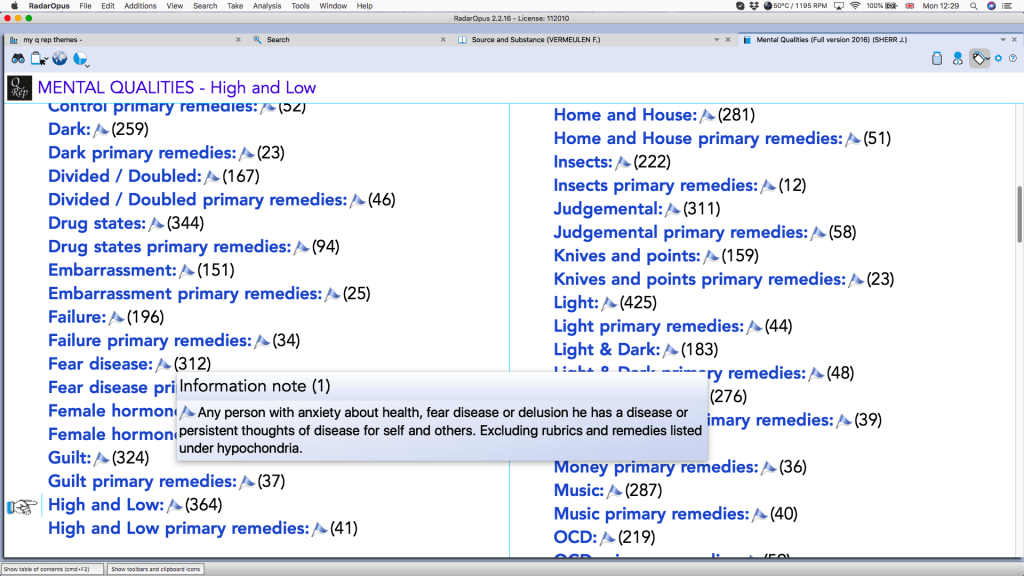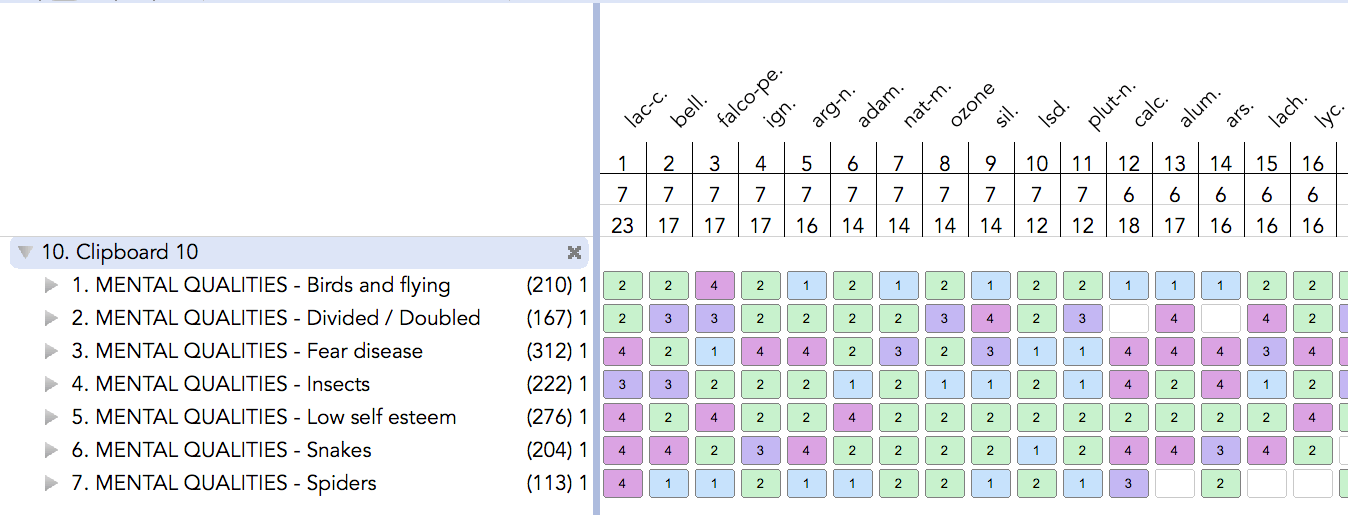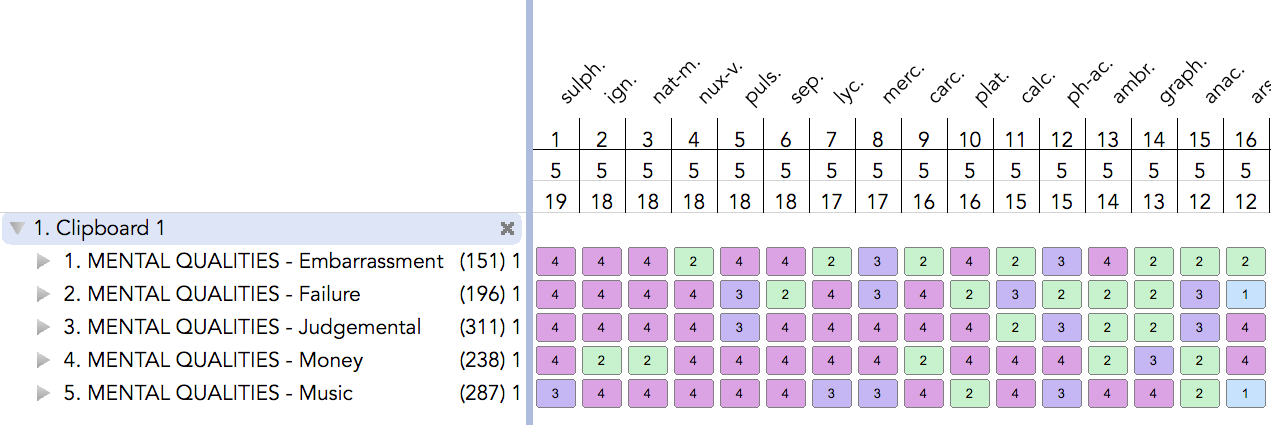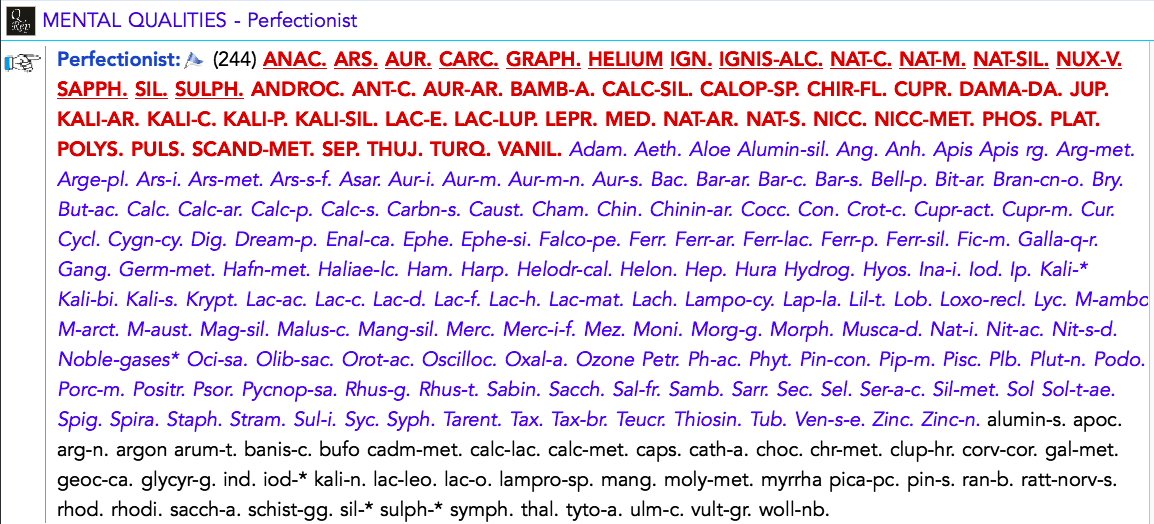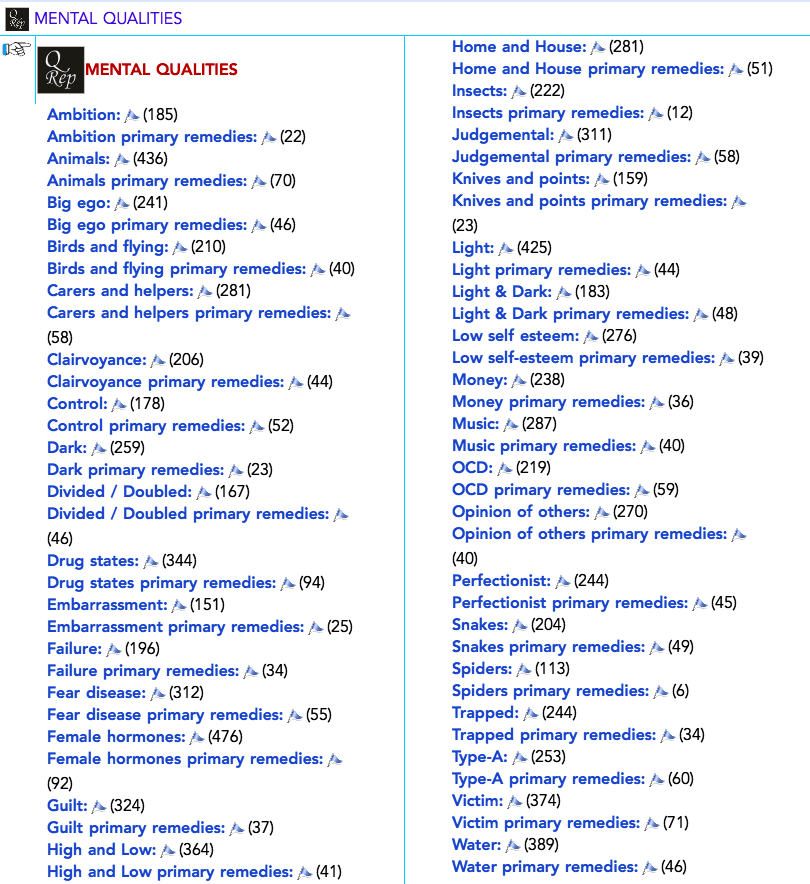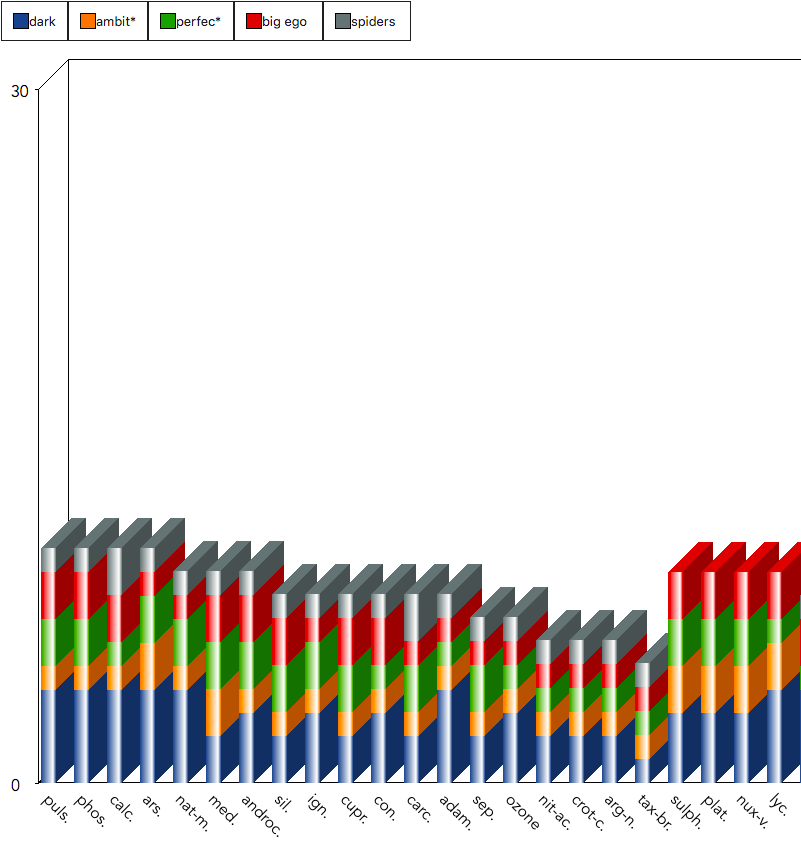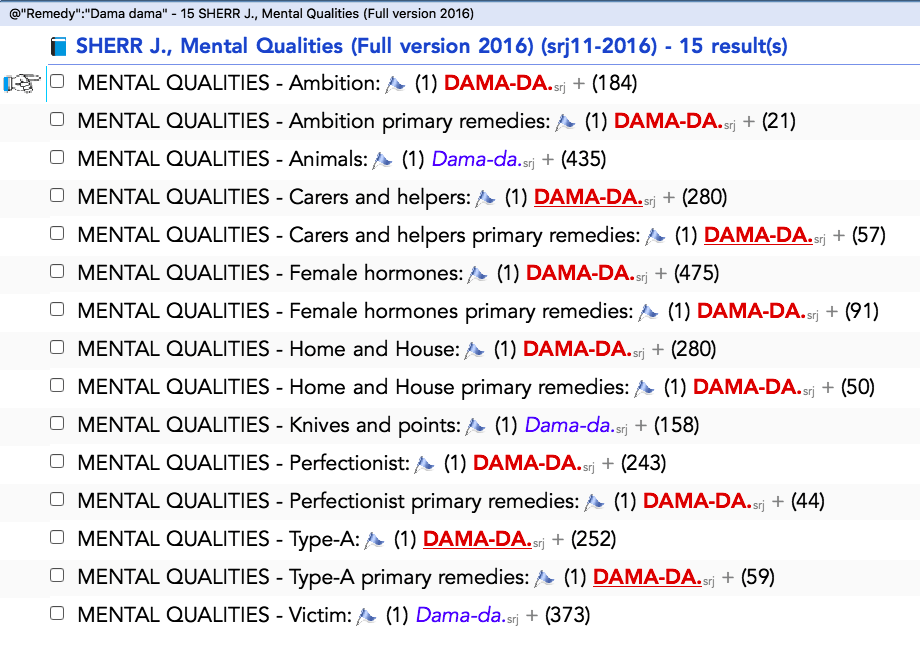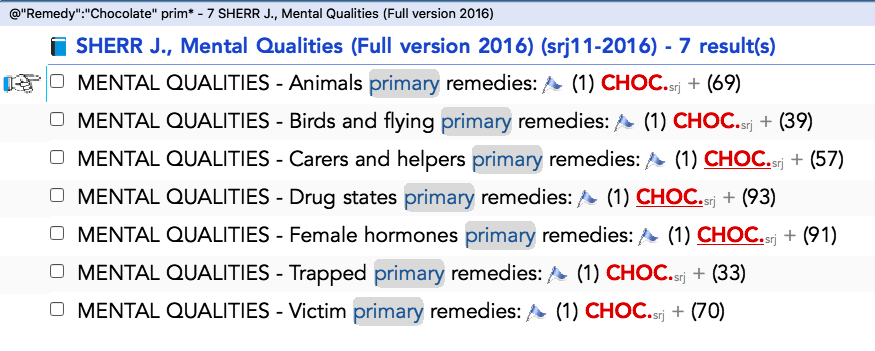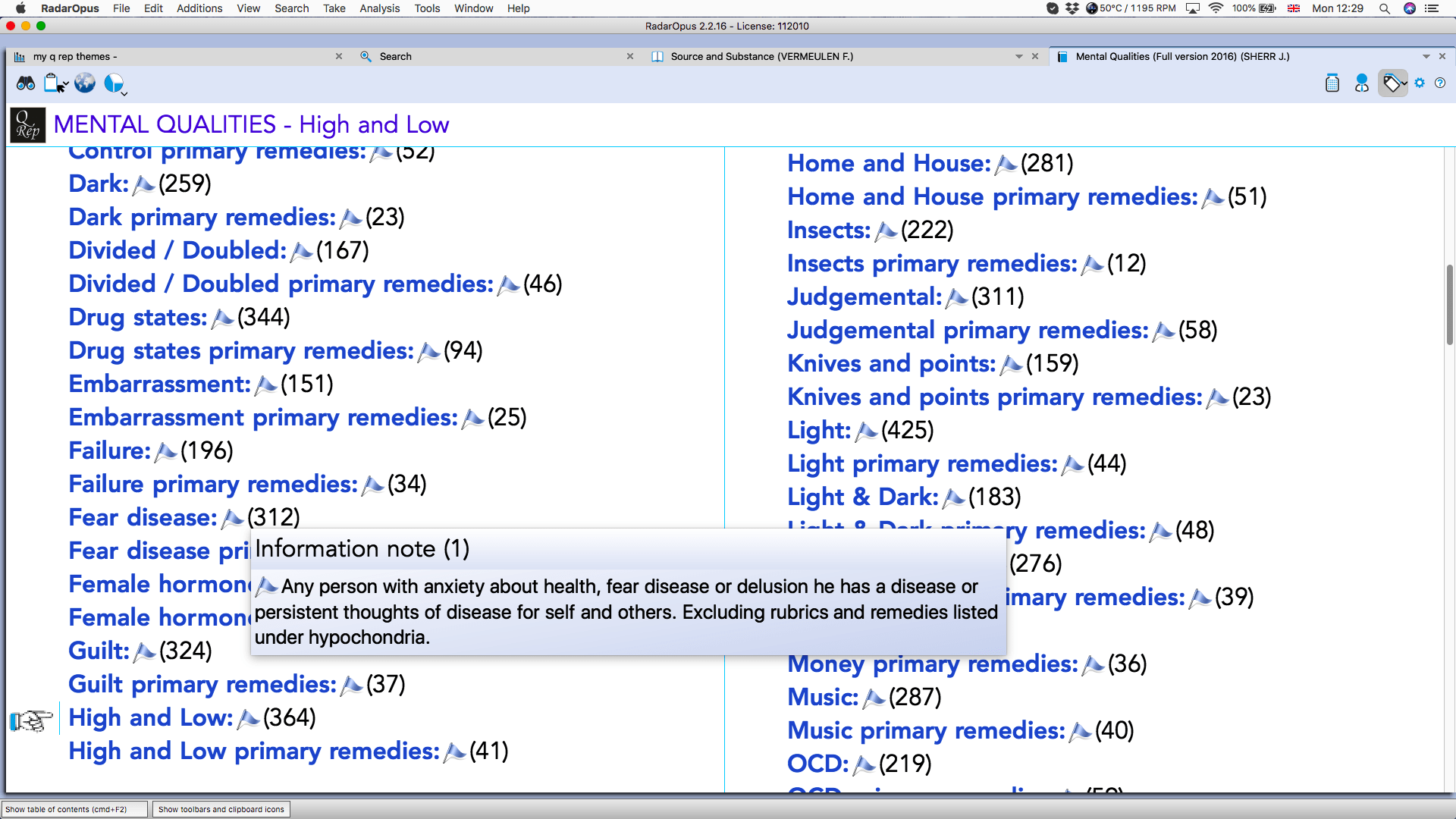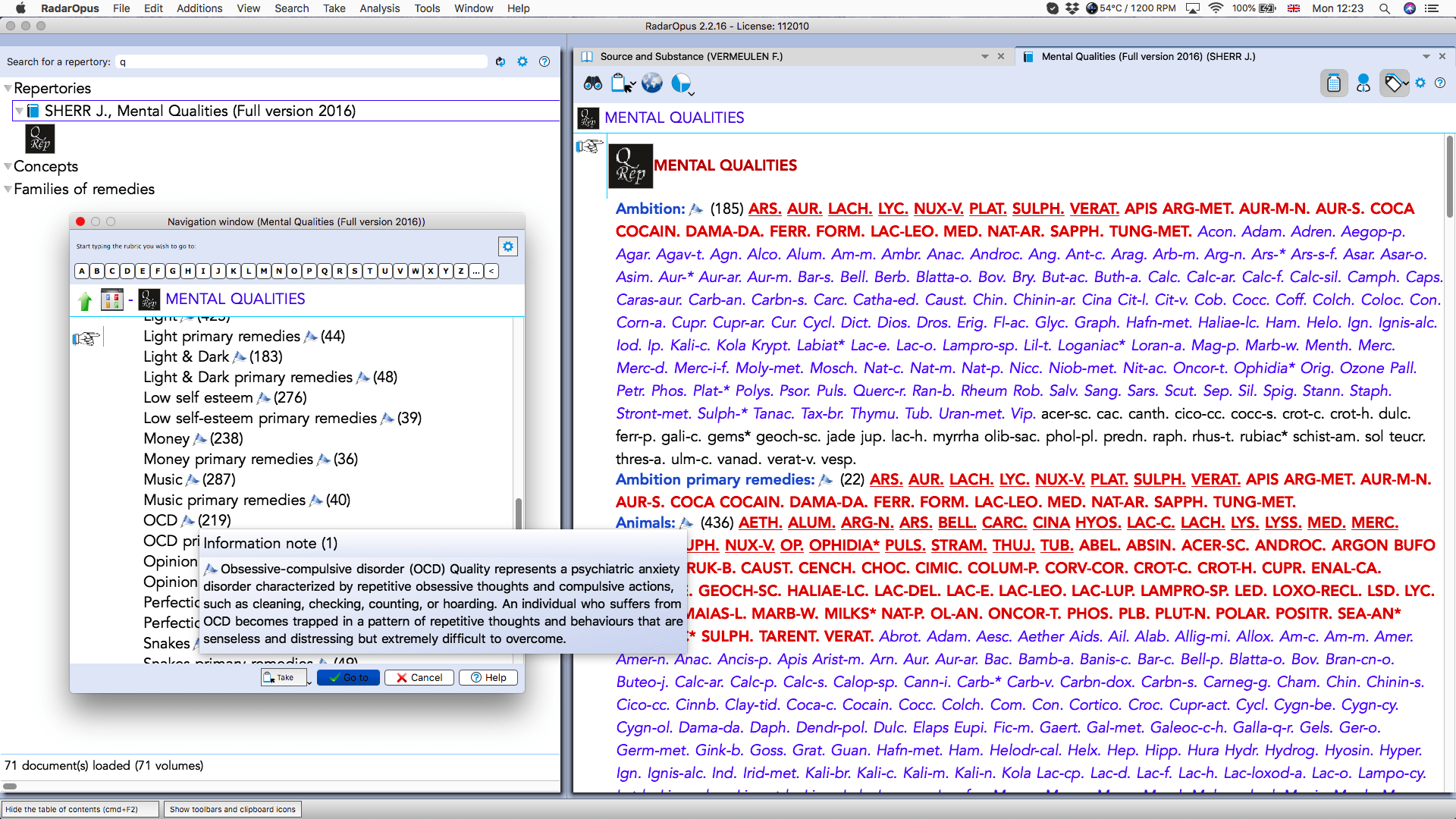He calls his repertory “The Repertory of Mental Qualities” due to four reasons:
- Quality denotes individual or isolated characteristics of a person.
- When selecting the degree of the medicine, he has emphasized the quality of the information, as opposed to repertories built on Kent’s repertory, hence in which the gradation is based on the prevalence or frequency of the symptom. Although his repertory he has focused on the intensity or quality of the symptom for each and every remedy and the quality of the origin of information to determine on the degree he give it in his Q-Rep. For an example, while Lac-f has appear in the first or initial degree in rubric “Fear of sharp things”, and in the Q- Rep he give it four features or points as it is a leading feature of the medicine, although from barely one prover.
- He has put a powerful emphasis on accuracy and quality throughout his work.
- This repertory must lead to an enhancement or improvement in the quality of the results!
The basic idea of the Q-Rep is to produce all-inclusive rubrics of important mental themes that have a huge high chance of having the correct medicines in them. So This is built on the Boenninghausen idea of generalization, and moreover on the idea of affinities. For instance, if the case has definite affairs of “home” and “victim”, and the chief physical affinity or harmony is bones, now we can utilize these three peculiarities or qualities to repertories. So There is an extremely high probability that the right remedy would be at the end of the result. The system is easy to work with, as we do not have to select or choose the exact small rubrics which can not have the correct remedy included.
He started by constructing a list of Mental Qualities which came up often in his day to day practice. Although the themes of money, self-esteem, caring, victim, snakes and obsessive-compulsiveness, he can choose Qualities such as, control, perfectionist, divided, clairvoyance, guilt, embarrassment, failure, opinion of others, home, water, knives and points, trapped, insects, spiders, music, big ego etc.
The Q-Rep is considerably more than an easy compilation of the rubrics and materia medica searches. The Materia Medica searches are also very essential, but can frequently lead to mistakes. For instance, whether we search for the term “fall” for the caliber or quality of “Low and High”, we can get the rubric i,e. “Coma with falling of eyelids”, that is not appropriate. Then a search for the term Embarrassment will yield medicines that are mentioned as “NOT being embarrassed” or medicines listed under I,e. “Unlike Bar-c, embarrassment is not an issue in this remedy.” In a homogenous way, searches for the theme of “dark” can bring up medicines with “dark urine” or “dark thoughts”. A search for the term “perfectionist” may bring up various remedies from individual cases, but often the symptoms have not been cured, and accordingly are not valid.
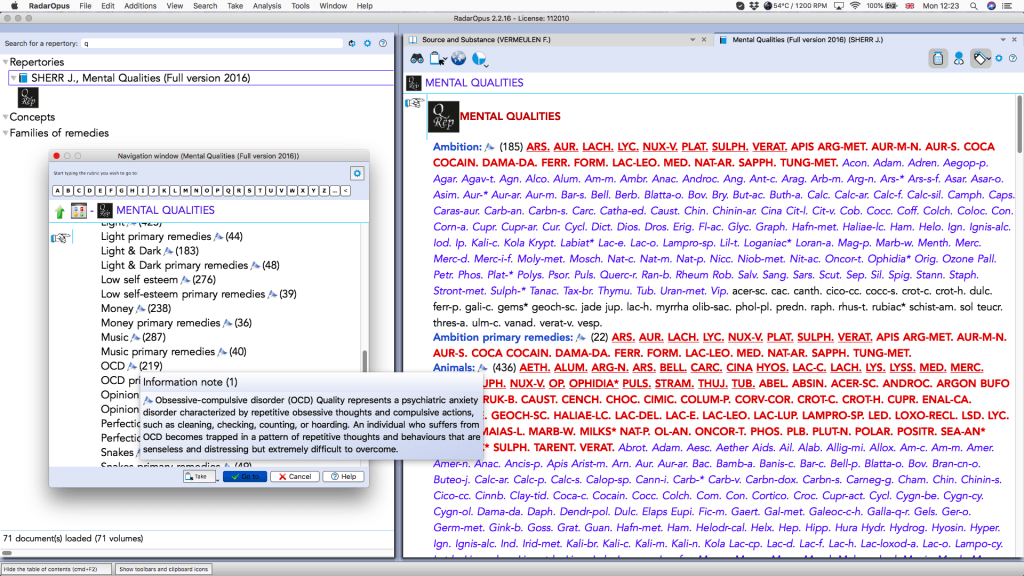
Another inaccuracies came up from few modern materia medica, they tend to be modified when adding medicines from collective or families themes. For instance, Cuprum-metallicum might have an Obsessive Compulsive Disorder, However this may be accurate for few Cuprum salts and it is not necessarily correct for each and every Cuprum salts.
To construct a repertory that might be as precise as possible, so we have personally or oneself checked and re-checked each entry at their source, be it materia medica, proving, cases or clinical additions.
I repeatedly use Phatak’s repertory, which is built on Boger’s repertory. Therefore In these repertories barely the medicines which contain the rubric’s theme as an important part of their construction and makeup are involved. So for an instance, in Phatak’s repertory the rubric such as “white discharges” includes only 20 medicines, far hardly then in Synthesis or Kent, but as you know that the medicines contains white discharges as a prime theme, such as remedy Kali-mur. This is correct even if the medicine is small.
Therefore he decided to make a “Primary rubric” in company with each Main rubric and sub-rubrics. This represents medicines which contain the theme as a major issue, as if they are small remedies. We can use those Primary rubrics barely in cases where the affairs are very pronounced, intense and is an important feature of the case.
